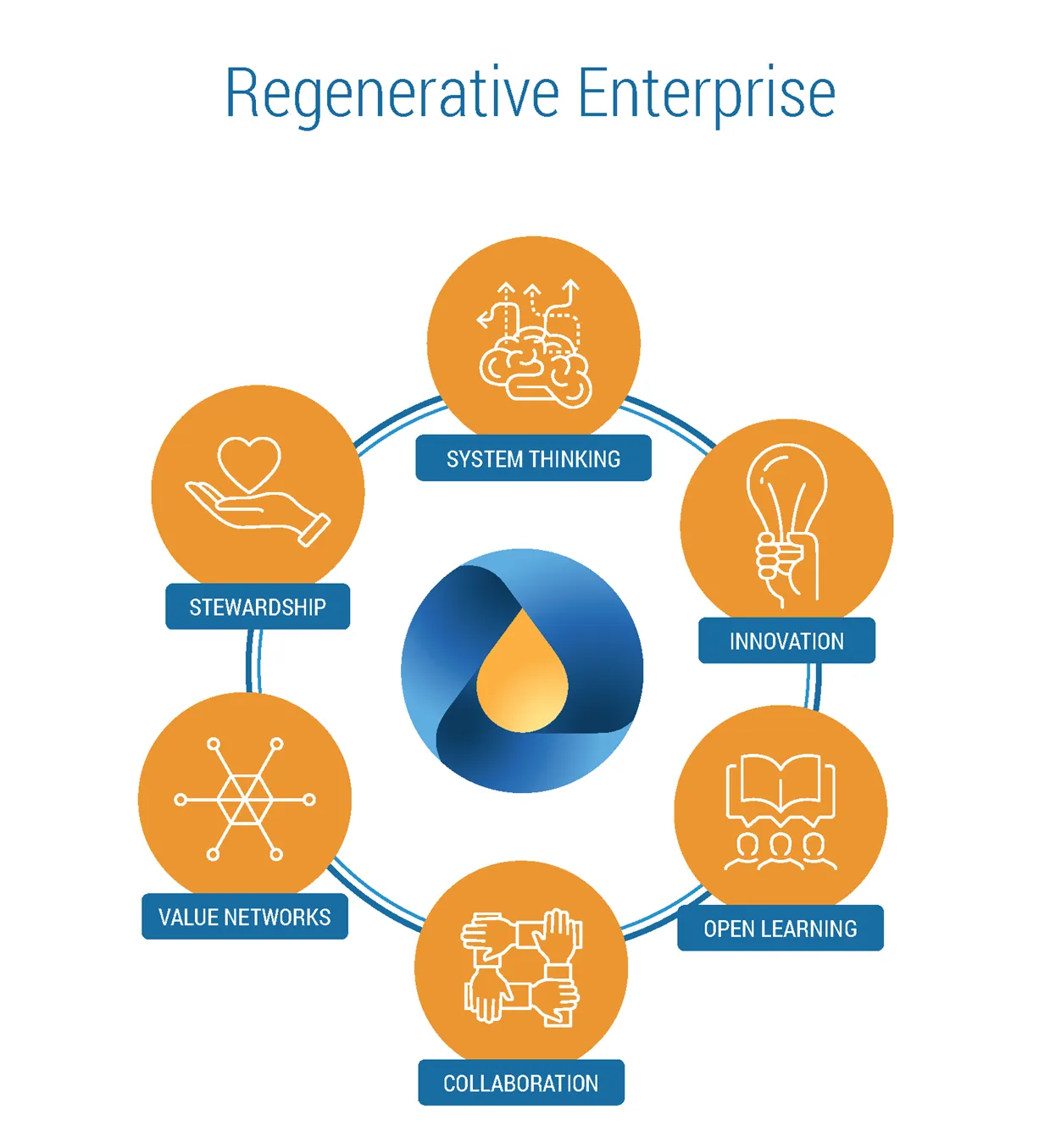Could Micro Precincts Save Small Towns?
Encouraging infrastructure development and business investment that strengthens regional communities is the holy grail of economic development. But we often lament the poor outcomes delivered in pursuit of this worthy goal. For too many regional communities our initiatives unfortunately reinforce the cynical assumptions that the original vision was misleading if not a lie. Not an intentional lie but one of lost opportunity due to poor leadership and implementation. How often have you been genuinely excited about the latest local development as compared to feeling a lukewarm disinterest if not disdain for the latest improvement project completed in your region?
Our intent is to make things better. But our implementation often makes things worse. This is most apparent and often disastrous for regional communities when dealing with built projects and physical infrastructure. But when intent and implementation align great things can happen and you can create long term catalysts for growth. Imagine if new investment and infrastructure consistently provided a legacy of new employment and local vitality. Micro Precincts could be the secret to boosting regional vitality.
Why Micro Precincts?
Over a 25 year design journey of collaborating on place-based revitalisation projects the notion of clusters, hubs and precincts often appear as a common catalyst in many local economic development initiatives. The more regional the project the more significant these places of concentrated activity become. The teasing question is: How small can a Precinct be and still be effective and financially viable? And would this provide a new tool for rural and remote regional communities.
What is a Micro Precinct?
Creating a Micro Precinct is a value guided design process creating a lifestyle brand that attracts new enterprise helping to transition local values into new jobs. In Urban Planning the term precinct is often used to describe a defined area that exhibits distinct characteristics or functions. A micro precinct is an attempt to plan smaller to gain more leverage. Going micro, forces you to break silos and develop ideas that have stronger connections to strengthen the business case. Micro Precincts challenge project governance and traditional business case metrics.
The Role of Micro Precincts in Place Experience
Having worked early in my design career on many streetscape strategies and individual streetscape projects it was always very useful to use the urban design principles of nodes and links to map and understand the fundamental structure of places. Generally, nodes are points of concentration and links are movement corridors connecting the nodes. It is basically the design thinking reflection of system thinking’s framework of objects and relationships.
Nodes and links are also a useful tool in understanding existing urban form and testing ideas for improvements. Although nodes and links are totally co-dependent, the real value is provided by the nodes. Links tend to facilitate the level of node activity. In this sense the cluster, hub or precinct provides the gravitas of the improvement project. Nodes create places whereas links move through places.
In regional communities, where change is sort to strengthen local lifestyle and encourage new economic activity the development of improved/new nodes are more important than links. In the sense that nodes drive the need for links whereas links don’t necessarily create nodes. Improved links can cut through and bypass regional places.
When resources are limited the smartest thing to do is focus on creating better nodes and for regional communities, particularly those outside regional cities micro precincts could be the best option.
Creating Place-based Project Ideas
After facilitating hundreds of stakeholder design workshops seeking to identify catalyst projects for sustainable economic revitalisation I have found the simplest way to test ideas is to use an ideation process that synergises place, values, and trends with a measure of significance.

· Place: In a design sense, place is the physical form and attributes. Every place is different and provides a unique footprint as the design canvas for the project.
· Values: Values reflect the aspirations and meanings held by the local community. These aspirations can often be broadly grouped into the categories of Business, Health, Education and Lifestyle.
· Trends: Trends are the internal and external forces of change that that can’t be ignored such as trends in the Market, Technology, Environment and Demographics. These must be acknowledged in the project ideation process.
· Significance: Significance is critical to the business case because there is no way to build cheap infrastructure. The project idea requires regional significance to strengthen the ROI for regional projects. It requires looking outwards to identify a bigger role in the region. The role may be to do with research and transferrable learnings. It might be about supplementing a bigger region employment base or enabling better services to be provided further into the region. Often the role is hidden or invisible to the local community.
The combination of these four areas creates the framework for creating ideas that facilitate change that grows and strengthens the local community.
Eight Regenerative Place Principles
From a project design perspective, developing a micro precinct concept can benefit from using the following eight principles to enhance ideation. These triggers can highlight additional layers that may be advantageous to weave into the built environment to further catalyse regenerative outcomes:
· Water Cycles: Where is the water travelling on your site. How can you leverage its value within your micro precinct.
· Nutrient Loops: Will the micro precinct create waste that can be used on site and add value to other micro businesses or community assets.
· Energy Systems: Can your micro precinct be energy independent. Is there value in sharing energy generation between businesses within your precinct.
· New Employment: What new micro businesses can your precinct support. Are you leveraging the market trends in micro business.
· Integrated Enterprises: Can you create micro business opportunities that leverage off other businesses in your precinct. Will some micro businesses provide/attract complimentary enterprise opportunities.
· Community Lifestyle: Does the precinct mix support and enhance local values and identity. Are there unique local characteristic that your precinct can strengthen.
· Enterprise Education: Can your micro precinct provide on site training. Is there a way to accelerate the micro business learnings to help build regional skills and capacity.
· Research Demonstration: Can your precinct provide a working demonstration of innovative micro businesses. Will the precinct be attractive to research institutions seeking practical projects to allow market driven research opportunities.
Four Key Micro Precincts Themes
The following four themes can help tease out new and innovative project ideas at the precinct scale.
Place Value to Market Value: A key Micro Precinct Goal is to take identified place values and transform them into market value. It's place-based and values driven. The best project will support growth that strengthens local lifestyle. Not an easy challenge but an important one.
High Value Low Volume: Another non-traditional goal for regional areas is to seek out enterprise opportunities that are high value and low volume. Our challenge is to find business opportunities that recognise the challenge of rural and remote locations and their lack of easy access to large markets. What new enterprise can challenge traditional commodity thinking of low value, high volume and long distance transport.
Regenerative Enterprise:
The important characteristic of regenerative enterprise is its capacity to be deeply connected into a network of businesses within the micro precinct. These connections are more nested rather than networked. Nesting enterprise is more a three dimensional web of connection rather than a two dimensional site planning network of nodes and links. It focuses on identifying waste value chains and other untapped synergies.

Building on the principles of designing out waste, regenerating natural systems and keeping products and materials in use an effective micro precinct needs to nurture enterprise activity that leverages:
· System Thinking: Exploring the potential relationships of micro enterprises within the precinct. How might potential relationships be leveraged to increase enterprise viability.
· Innovation: Embracing the opportunity of market trends to support new enterprise. Can we think outside the box.
· Open Learning: Commit to sharing knowledge. Can we design learning and sharing into the business model.
· Collaboration: Be genuine about business synergy. What are market opportunities for micro business to develop collaborative enterprise models where everyone wins.
· Value Networks: One micro business waste can often be another micro business opportunity. Are there new enterprise opportunities nurtured by waste value streams that have traditionally been ignored.
· Stewardship: Does the micro precinct help build a better future. Does the enterprise mix support the long term aspirations of the community within the sustainable capacity of the natural environment.
NEW (Nutrients, Energy, Water) waste value chains: Micro Precincts can enhance their financial viability by embracing the NEW waste value chains. The three areas of nutrients, energy, and water provide an opportunity to be creatively recaptured, reconstituted and reused in an integrated network of micro precinct enterprise activities.
Re-thinking about Nutrients, Energy and Water can provide new enterprise opportunities that capture value in areas that have been traditionally marginal or not normally viable and tip them across the line to be viable micro enterprises that can sustain themselves. There are interesting opportunities in this space with technology and market trends that’s evolving every day.
Two simple but critical truths for Micro Precincts
Although there are far too many nuances to developing a micro precinct concept that could be covered in this article, decades of project experience have consistently proven that place-based development success is driven by two simple truths.
1. Integrated Delivery + Organisational Leadership = Leveraged Opportunities
2. Siloed Delivery AND/OR Disengaged Leadership = Lost Opportunity
For regional communities and those that are passionate about their future, avoiding lost opportunity maybe be simpler than you think.

Want To Get Your Project Started?
Schedule a complementary call to go over your requirements and get a free project road mapping done.

Helping to create Better Places for People, Business, and the Planet
© 2023 Vital Places. All Rights Reserved.